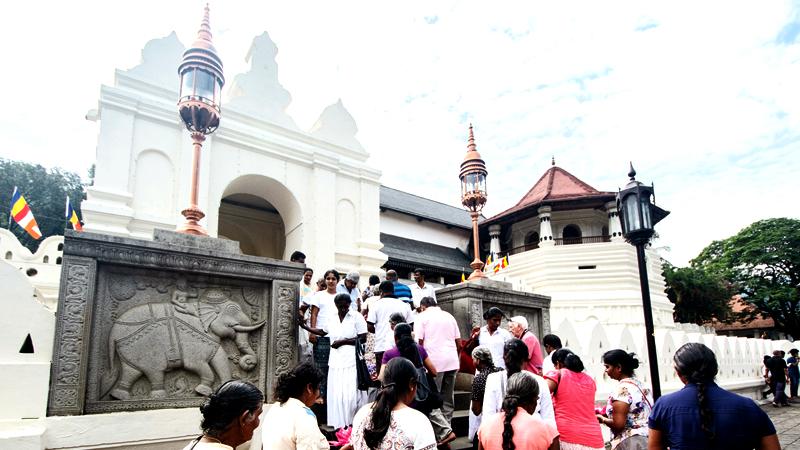

Annually, during a ten-day period in July or August, elephants from all parts of the country flock to the premises of the Sri Dalada Maligawa (Temple of the Sacred Tooth) in Kandy to perform specific duties in the religious procession and to venerate the Sacred Tooth Relic of the Buddha. Every evening elephants walk through the streets of Kandy in a series of great magnificent processions collectively called the Kandy Esala Perahera, one of the greatest cultural and religious pageants in the world.
It is impossible to imagine life in Sri Lanka without the elephant. It is so intricately woven to the work and worship of the island and its people and the image of the elephant is everywhere. It is the elephant that takes pride of place, has the holiest of tasks and it is the elephant that unquestionably steals the show in Kandy.
I often find myself spending a day in Kandy, especially, at the premises of the Sri Dalada Maligawa photographing the elephants. During the festival period the streets of Kandy are filled with people from across the island. Pilgrims come to venerate and pray at the Temple of the Tooth and the adjoining Hindu devales. Foreign tourists take pictures with elephants. Drummers and performers, both young and old, gather during the day in preparation for the evening’s procession. Elephants can be seen walking along the streets with their mahouts. The entire city of Kandy bustles with activity.
About an hour after sundown, a large sound is heard throughout the town. It signals the beginning of the Perahera. People along the route toss coins on the street that are collected for the Temple. They are followed by hundreds of costumed drummers, performers, and elephants that dazzle the crowd.
The highlight of the entire evening is the sight of the Golden Casket that holds the Sacred Tooth Relic. It is ceremoniously placed inside a specially designed casket that is mounted on the shoulders of the grandest elephant in the procession. As the tusker moves along the Perahera route, pilgrims fold their hands and bow in prayer and reverence to the Buddha.
Unfortunately, from time to time, we get news of an elephant running amok or goring a mahout to death before or during the processions. This is because of musth, a violent development in the adult male elephant. This is caused by over activity of the male sex hormone. The secretion from the musth gland triggers the violent mood of the tusker and it runs out of control. Prolonged exposure to light during processions works as a catalyst for musth and this explains the reason for elephants running amok during festival processions.

When I was a little boy, my grandfather told me a story from the Kandy Perahera in 1959. A tusker named Raja ran amok and created a stampede in which several people were killed and many others injured. Since then, such incidents have been minimal.
The pageantry of the festival, the devotion of the pilgrims, and the elegant behaviour of the amazing elephants make the entire event astonishing to behold.
